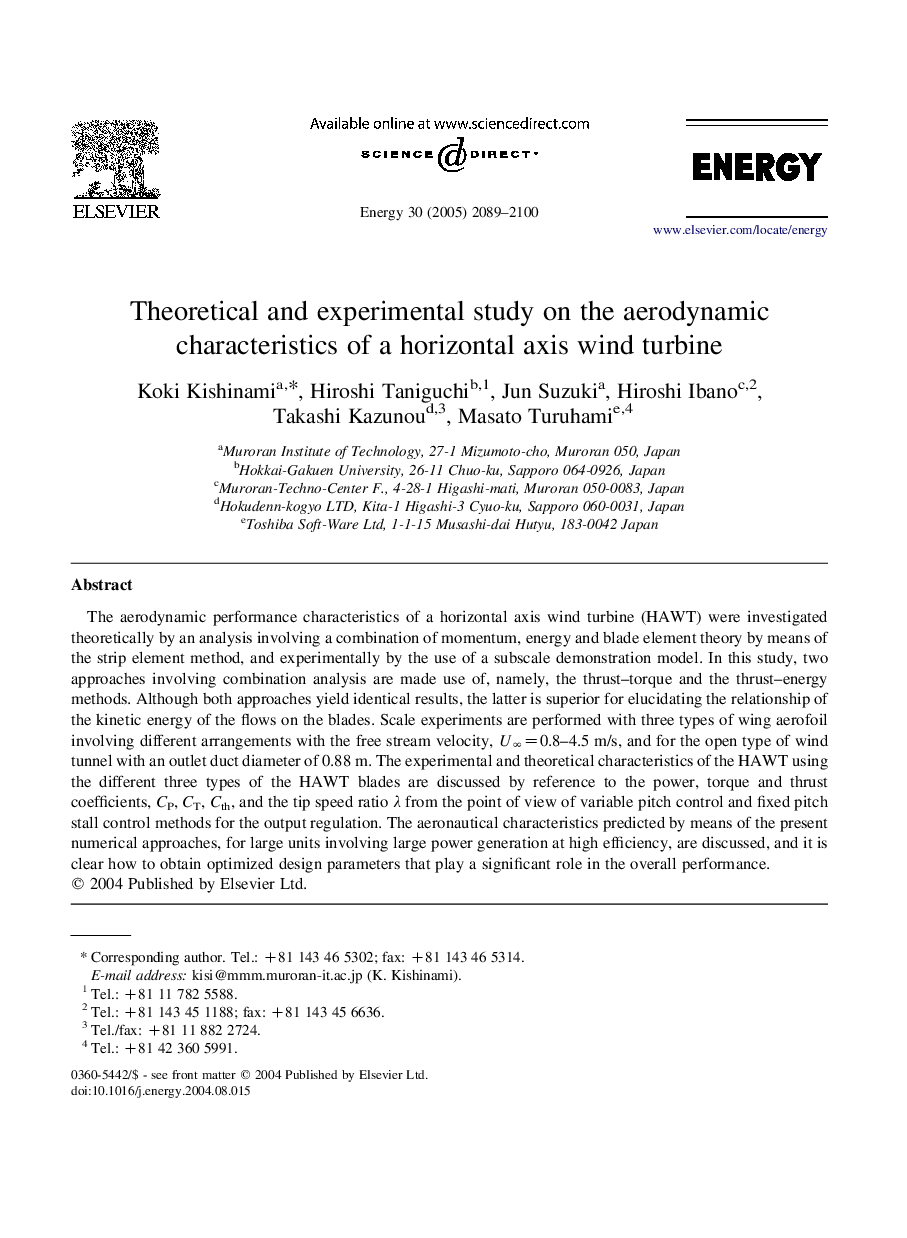| Article ID | Journal | Published Year | Pages | File Type |
|---|---|---|---|---|
| 1736594 | Energy | 2005 | 12 Pages |
The aerodynamic performance characteristics of a horizontal axis wind turbine (HAWT) were investigated theoretically by an analysis involving a combination of momentum, energy and blade element theory by means of the strip element method, and experimentally by the use of a subscale demonstration model. In this study, two approaches involving combination analysis are made use of, namely, the thrust–torque and the thrust–energy methods. Although both approaches yield identical results, the latter is superior for elucidating the relationship of the kinetic energy of the flows on the blades. Scale experiments are performed with three types of wing aerofoil involving different arrangements with the free stream velocity, U∞=0.8–4.5 m/s, and for the open type of wind tunnel with an outlet duct diameter of 0.88 m. The experimental and theoretical characteristics of the HAWT using the different three types of the HAWT blades are discussed by reference to the power, torque and thrust coefficients, CP, CT, Cth, and the tip speed ratio λ from the point of view of variable pitch control and fixed pitch stall control methods for the output regulation. The aeronautical characteristics predicted by means of the present numerical approaches, for large units involving large power generation at high efficiency, are discussed, and it is clear how to obtain optimized design parameters that play a significant role in the overall performance.
